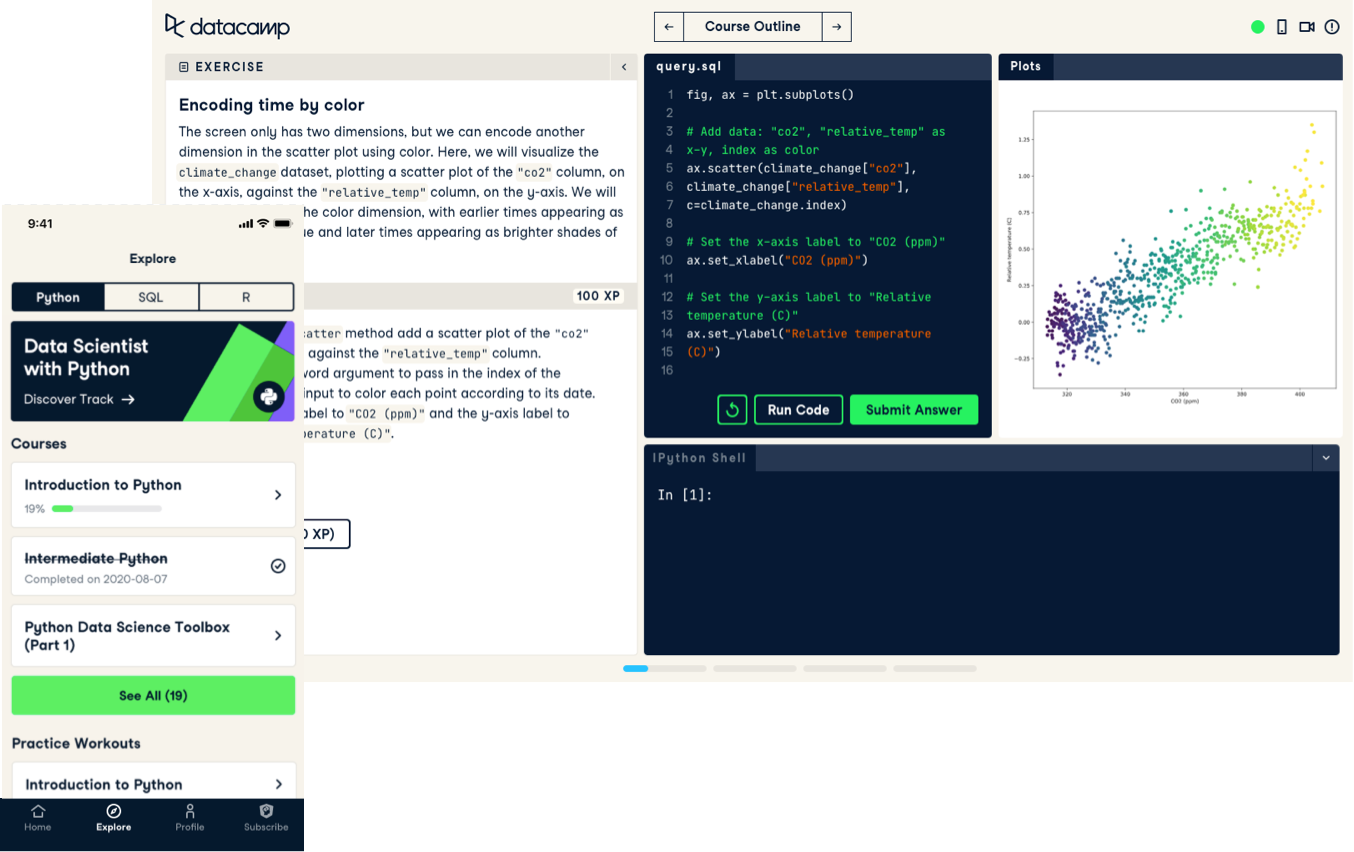Hypothesis Testing in R
Learn how and when to use hypothesis testing in R, including t-tests, proportion tests, and chi-square tests.
Suivez de courtes vidéos animées par des instructeurs experts, puis mettez en pratique ce que vous avez appris avec des exercices interactifs dans votre navigateur.

Learn how and when to use hypothesis testing in R, including t-tests, proportion tests, and chi-square tests.
Learn the role Generative Artificial Intelligence plays today and will play in the future in a business environment.
In this course, you will learn the fundamentals of Kubernetes and deploy and orchestrate containers using Manifests and kubectl instructions.
In this course you will learn the basics of machine learning for classification.
Enhance your reports with trend analysis techniques such as time series, decomposition trees, and key influencers.
Continue your data visualization journey where youll learn practical techniques for incorporating DAX measures and progressive disclosure in your reports.
Learn to use facets, coordinate systems and statistics in ggplot2 to create meaningful explanatory plots.
Master Apache Kafka! From core concepts to advanced architecture, learn to create, manage, and troubleshoot Kafka for real-world data streaming challenges!
Learn to connect Tableau to different data sources and prepare the data for a smooth analysis.
Implement experimental design setups and perform robust statistical analyses to make precise and valid conclusions!
Learn about the power of Databricks Lakehouse and help you scale up your data engineering and machine learning skills.
In this course you will learn the details of linear classifiers like logistic regression and SVM.
Learn how to deploy and maintain assets in Power BI. You’ll get to grips with the Power BI Service interface and key elements in it like workspaces.
Learn to perform linear and logistic regression with multiple explanatory variables.
Learn to acquire data from common file formats and systems such as CSV files, spreadsheets, JSON, SQL databases, and APIs.
Explore data ethics with this comprehensive introductory course, covering principles, AI ethics, and practical skills to ensure responsible data use.
Learn essential data structures such as lists and data frames and apply that knowledge directly to financial examples.
Apply PyTorch to images and use deep learning models for object detection with bounding boxes and image segmentation generation.
Discover how to make better business decisions by applying practical data frameworks—no coding required.
Find tables, store and manage new tables and views, and write maintainable SQL code to answer business questions.
Expand your Google Sheets vocabulary by diving deeper into data types, including numeric data, logical data, and missing data.
Gain an introduction to data governance, exploring its meaning, purpose, and how to implement a data governance framework.
R Markdown is an easy-to-use formatting language for authoring dynamic reports from R code.
In this course, you will use T-SQL, the flavor of SQL used in Microsofts SQL Server for data analysis.
Navigate and use the extensive repository of models and datasets available on the Hugging Face Hub.
Master Power Pivot in Excel to help import data, create relationships, and utilize DAX. Build dynamic dashboards to uncover actionable insights.
Transform almost any dataset into a tidy format to make analysis easier.
In this course, you will be introduced to unsupervised learning through techniques such as hierarchical and k-means clustering using the SciPy library.
Building on your foundational Power Query in Excel knowledge, this intermediate course takes you to the next level of data transformation mastery
Unlock more advanced AI applications, like semantic search and recommendation engines, using OpenAIs embedding model!